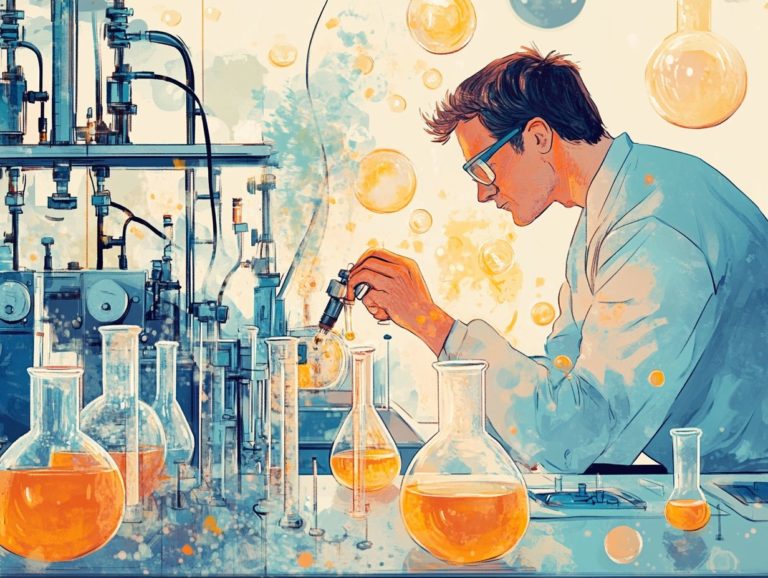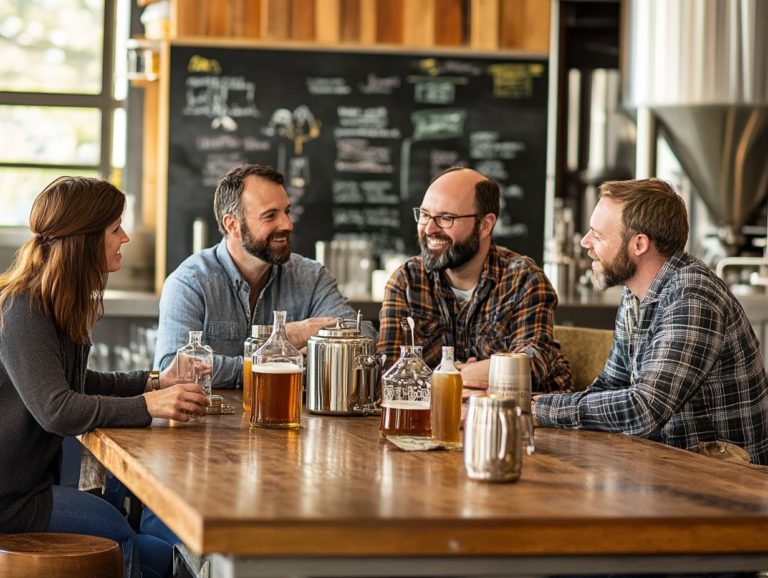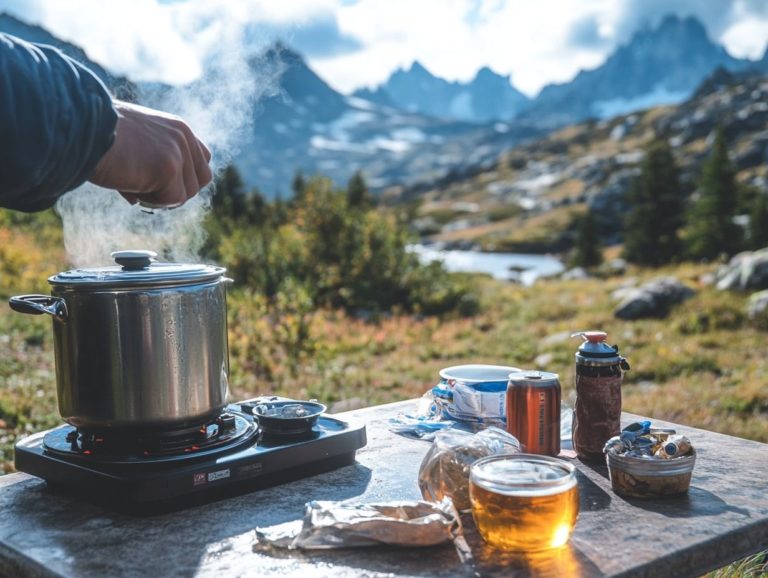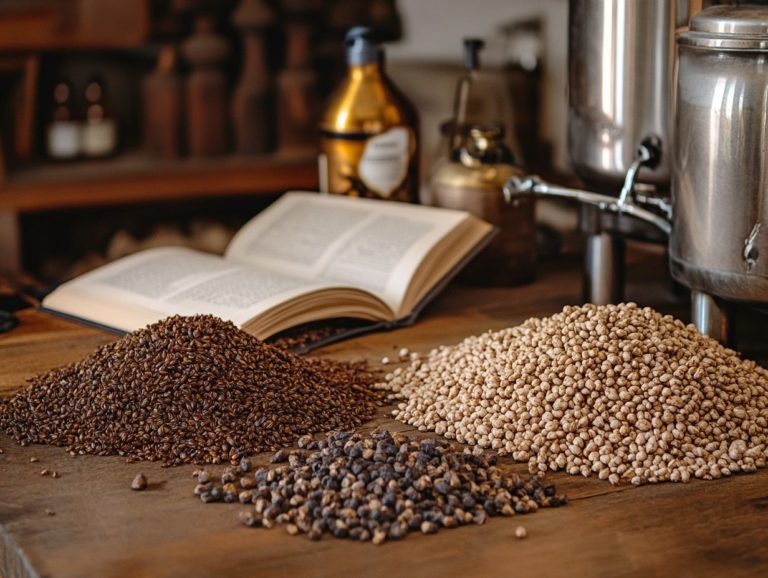How Can I Improve My Brewing Skills?
Contents
- Mastering the Art of Brewing Coffee
- Key Takeaways:
- Understanding the Basics of Brewing
- Improving Your Brewing Skills
- Troubleshooting Common Brewing Problems
- 2. Weak or Watery Coffee
- 3. Uneven Extraction
- 4. Equipment Malfunctions
- Advanced Techniques for Mastering Brewing
- Frequently Asked Questions
- How Can I Improve My Brewing Skills?
- What are some common mistakes to avoid when trying to improve my brewing skills and knowledge base?
- How can I become more knowledgeable about different brewing styles, brewing techniques, and fermentation processes?
- What is the most important aspect of brewing to focus on when trying to improve my skills?
- How can I improve my beer tasting abilities and better understand flavor profiles?
- Is it Necessary to Invest in Expensive Equipment to Improve My Brewing Skills?
Mastering the Art of Brewing Coffee
Brewing coffee is a captivating blend of art and science. It presents you with limitless opportunities for exploration and mastery. The right brewing techniques and understanding of ingredients can significantly improve your brewing skills.
Whether you find yourself as a curious novice or a seasoned aficionado, grasping the essential tools, methods, and techniques will undoubtedly elevate your brewing experience to new heights. This includes forced fermentation and yeast cropping.
This guide delves into the fundamentals of brewing, provides insightful tips to refine your brewing skills, tackles common fermentation challenges, and introduces advanced techniques like managing diacetyl, a compound that can affect the flavor of beer, and the process by which yeast alters hop compounds to create unique flavors, that will truly enhance your coffee journey.
Get ready to brew like a professional and impress your friends!
Key Takeaways:
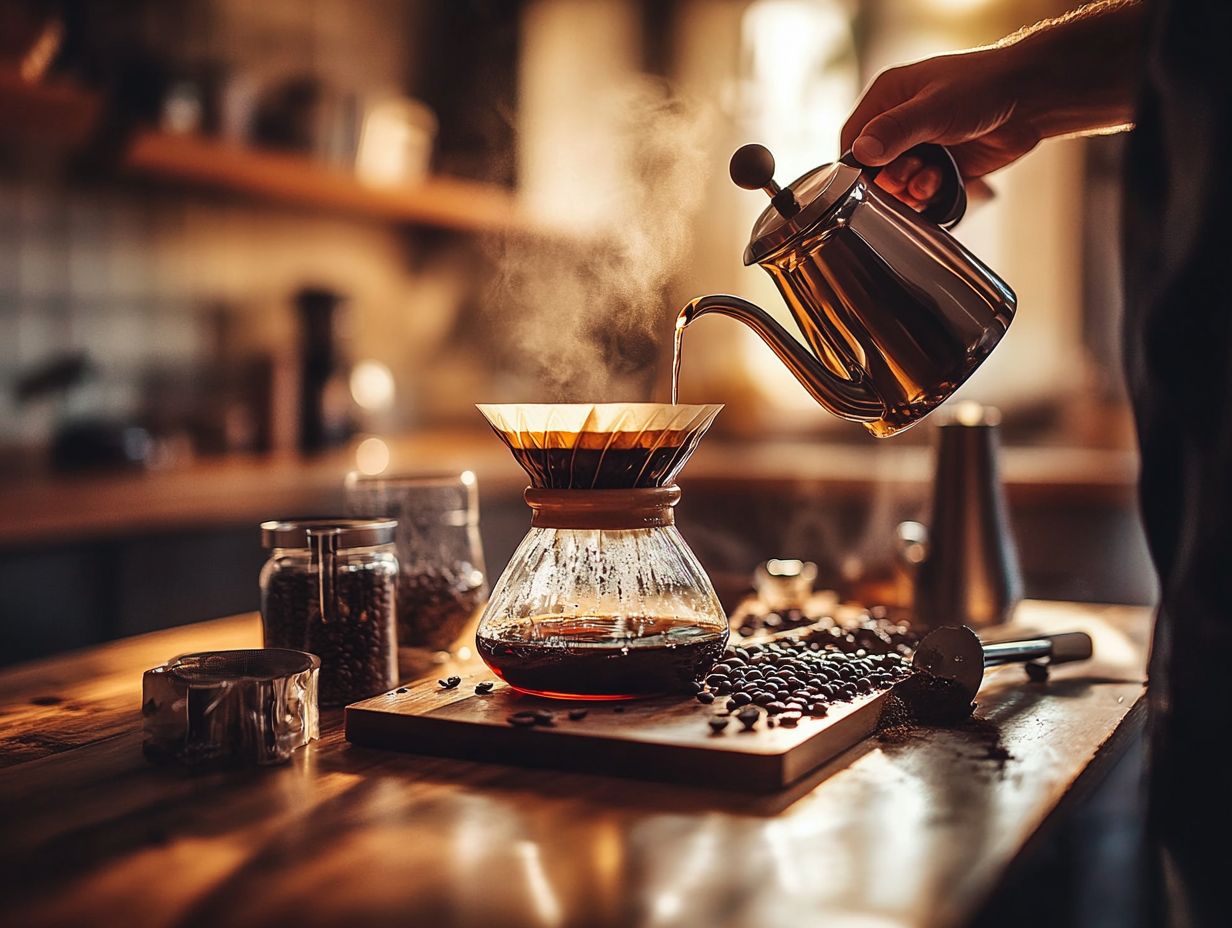
- Experiment with different types of beans to improve your brewing skills and discover new flavors, enhancing your understanding of yeast behavior.
- Understand the role of water quality, grind size, and yeast nutrition in brewing for a better cup of coffee.
- Keep track of your brewing process, including yeast performance and fermentation temperature, and troubleshoot common problems to continuously improve your skills.
Understanding the Basics of Brewing
Grasping the fundamentals of brewing is vital for anyone aspiring to become a skilled brewer. It involves a range of processes and techniques that ultimately shape the beer you produce. Knowledge of fermentation processes, managing diacetyl, and small-batch brewing is essential.
From meticulously selecting ingredients such as malt, hops, barley, and water to mastering the complex fermentation processes with yeast and understanding its behavior, every step is crucial for crafting distinctive flavor profiles.
Familiarity with brewing equipment and techniques is equally important. It empowers you to tackle challenges and create exceptional beers that satisfy the discerning palate of enthusiasts and the casual drinker alike. Utilizing a robust knowledge base will help you navigate the intricacies of craft brewing.
What are the Essential Tools and Equipment for Brewing?
The essential tools and equipment for brewing you need include a fermentation vessel, brewing kettle, and an array of instruments that ensure yeast health and effectively manage the fermentation processes. Key items include vitamins and minerals to sustain yeast vitality and optimize fermentation.
Each of these components plays a crucial role in your brewing journey. They directly influence the flavor and clarity of your final product. The fermentation vessel, often crafted from food-grade plastic or glass, is where yeast flourishes, transforming the sugary wort into alcohol. The brewing kettle is essential for boiling the wort; it not only extracts flavors from the hops but also eliminates unwanted bacteria, safeguarding your brew.
Temperature control devices, like thermostats or heat wraps, are vital for maintaining fermentation temperatures. They can significantly impact yeast activity, ultimately shaping the aroma and taste of your beer. Together, these tools not only streamline your brewing process but also elevate the overall quality of the beer you produce.
What are the Different Types of Brewing Methods?
Different brewing methods can dramatically shape the flavor profiles, alcohol content, and overall quality of beer. With options ranging from time-honored techniques to innovative small-batch brewing practices, the choices are as diverse as the palates of those who enjoy them.
Each brewing style you encounter be it the classic decoction method or modern techniques like pressure fermentation determines how yeast performs during fermentation. Traditional methods often embrace open fermentation, allowing unique wild yeast strains to impart distinctive character to the beer. On the other hand, contemporary practices may rely on precise temperature control, optimizing yeast activity and elevating flavor development.
Small-batch brewing techniques invite you to explore the art of experimentation. You have the freedom to manipulate variables like grain types and hop additions. By grasping these subtleties, you can truly appreciate the intricate relationship between brewing methods, yeast behavior, and the rich tapestry of flavors in the final brew. Understanding the brewer’s wort composition can further enhance your ability to craft unique beers.
Improving Your Brewing Skills
Enhancing your brewing skills is an ever-evolving journey. It requires you to deepen your understanding of yeast behavior and master an array of brewing techniques. This commitment leads to better beer quality and more consistent results. Addressing fermentation challenges head-on can lead to better outcomes in your brewing endeavors.
1. Experiment with Different Varieties of Beans
Experimenting with different varieties of beans can help you discover new flavors and elevate the overall quality of your brew. It allows you to bring out distinct characteristics that cater to a range of palates. This practice is essential for anyone serious about craft brewing.
The choice of bean varieties plays a crucial role in the brewing process. Each type interacts differently with other ingredients like hops, yeast, and malt. For example, lighter roasts often impart floral and citrus notes that enhance the brightness of your beer, while darker roasts may introduce chocolatey or nutty undertones, resulting in a richer finish. Incorporating principles of forced diacetyl rest, a process that helps improve beer flavor stability, can also enhance your brew.
The fermentation process further influences these profiles. The yeast you choose can highlight certain attributes or mellow specific flavors, creating a pleasing balance or an intriguing contrast. Understanding these interactions is vital for you as a brewer, especially if your goal is to craft beverages that resonate with specific tastes and preferences.
2. Try Different Brewing Techniques
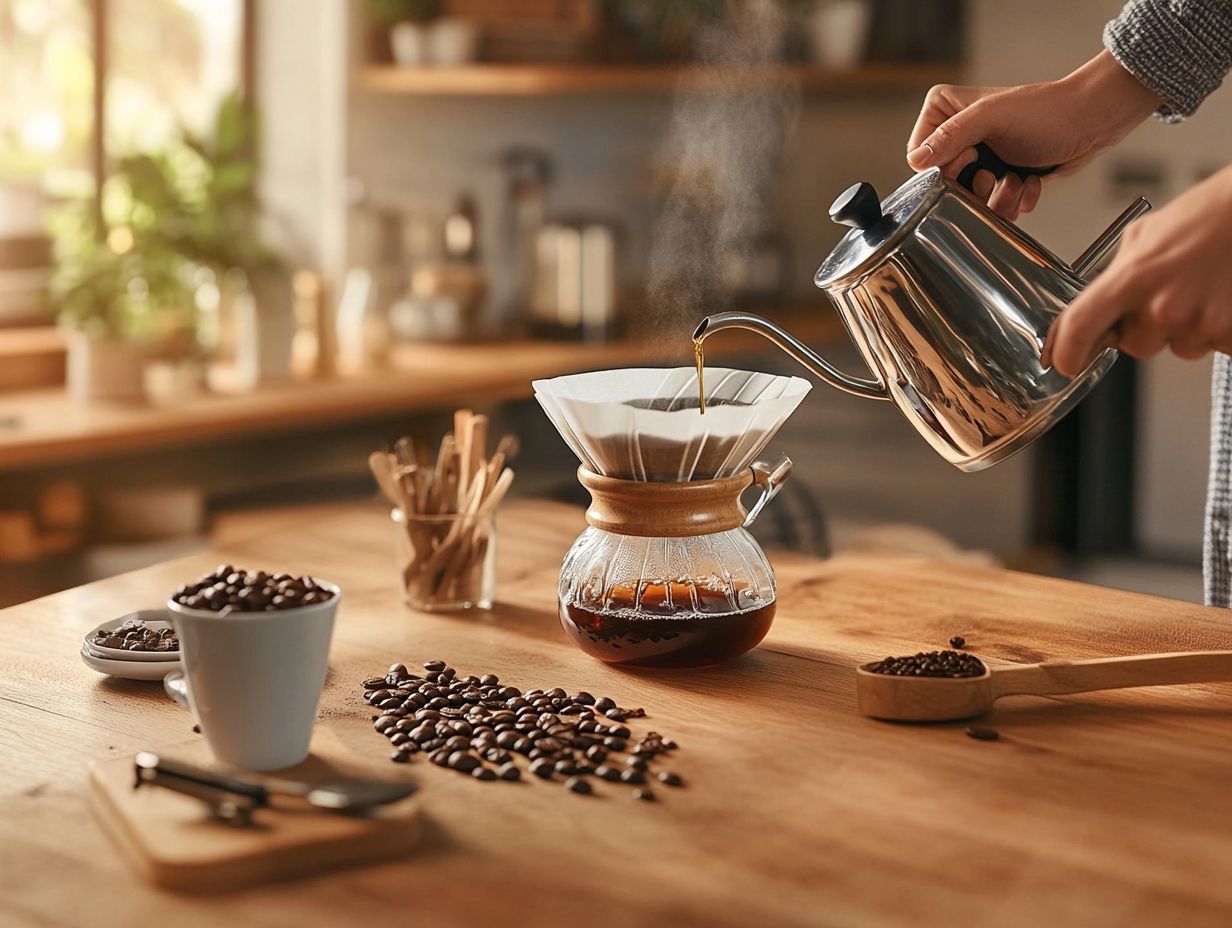
Exploring various brewing techniques, such as forced fermentation and biotransformation, can profoundly influence yeast behavior and the ultimate flavor of your beer. These methods are transformative for both small-batch brewing and large-scale operations.
These techniques unlock the remarkable potential of yeast, inviting you to experiment with a variety of flavor profiles and mouthfeel adjustments. For instance, forced fermentation can significantly speed up the fermentation process, allowing for a quicker production turnaround. This technique requires meticulous control of temperature and pressure to avoid any unwanted off-flavors. Utilizing the right brewing equipment ensures these processes run smoothly.
On the other hand, biotransformation is when yeast changes hop compounds into new flavor forms. This method takes advantage of specific yeast strains, enriching your beer’s bouquet. While it can yield rich and complex flavor notes, it also poses challenges, such as managing fermentation temperature to keep the yeast healthy and performing at its best.
By grasping the intricacies of each technique, you can pave the way for remarkable innovations in your brewing journey. Don’t miss the opportunity to elevate your brewing start experimenting with these techniques today!
Learn about Water Quality and Its Impact on Brewing
Understanding water quality is essential for your brewing efforts, as it can significantly impact yeast health, flavor profiles, and the overall brewing process, ensuring that your beer meets the highest quality standards.
Adequate water chemistry is crucial for optimal yeast activity and beer clarity. The mineral content of your water plays a pivotal role; various ions like calcium, magnesium, and sulfate contribute to the mouthfeel and body of your beer while also influencing yeast activity.
Balancing these minerals enhances the fermentation process, allowing the yeast to thrive and generate those desirable esters and phenols that elevate the flavor of your brew. The pH levels of your brewing water directly affect enzyme activity during mashing, which in turn influences sugar extraction and ultimately the sweetness of your beer.
Paying close attention to water chemistry is key to creating great-tasting beer!
Understand the Role of Grind Size
The grind size of your ingredients plays a pivotal role in the extraction process during brewing, influencing the flavor profiles and overall quality of your final product.
For example, opting for a finer grind size creates a larger surface area, accelerating extraction and intensifying flavors, making it the perfect choice for methods like espresso.
On the flip side, coarser grinds are best for techniques such as French press or cold brew, where a slower extraction allows the more delicate characteristics of the coffee or tea to shine through, resulting in a smoother and more nuanced taste.
Achieving the right balance between grind size, brewing method, and extraction time is crucial. This balance affects the aroma, acidity, and sweetness of your beverage, ultimately crafting a delightful experience for your palate.
Take Notes and Keep Track of Your Brewing Process
Taking notes and meticulously tracking your brewing process empowers you to identify patterns, troubleshoot fermentation challenges, and refine your skills as a brewer.
By documenting specific details such as the exact ingredients used, the precise fermentation temperature, and the behavior of the yeast throughout the brewing cycle you can unlock invaluable insights into the brewing process.
These elements are critical not just for achieving your desired flavor profile but also for ensuring consistency across batches. Observing how variations in temperature, yeast health, and diacetyl levels impact the final product will enable you to fine-tune your techniques for optimal results.
Thus, maintaining a detailed brewing journal becomes an essential practice for anyone serious about perfecting their craft.
Troubleshooting Common Brewing Problems
Addressing common brewing problems often involves understanding the intricate details of fermentation processes and yeast behaviour. Improving your knowledge base can significantly aid in resolving these issues.
Troubleshooting common brewing problems, such as diacetyl management, yeast health issues, and forced fermentation, is crucial for maintaining exceptional beer quality and ensuring that your brewing processes operate seamlessly.
By addressing these challenges head-on, including yeast behaviour and fermentation processes, you can elevate your craft and create brews that consistently impress. Have you ever wondered how the grind size affects your brew? Let s find out!
1. Bitter or Sour Tasting Coffee
A bitter or sour coffee can stem from improper brewing techniques, such as over-extraction or using unbalanced ingredients, ultimately leading to a less-than-desirable flavor profile.
Understanding the role of yeast performance and biotransformation (the process by which yeast converts compounds during fermentation) can also contribute to better taste in beer brewing.
Understanding these causes is essential for anyone looking to elevate their brewing skills. Elements like water temperature and grind size significantly influence the final taste.
For example, if the water is too hot, it can extract an overpowering bitterness from the coffee grounds, while a coarse grind might leave you with a sour flavor due to under-extraction.
To combat these challenges, adjusting your brewing time and experimenting with ingredient ratios can make a world of difference. By ensuring an appropriate brew ratio and adhering to ideal extraction times, you can preserve the coffee’s natural sweetness and acidity, resulting in a balanced and delightful flavor profile that truly satisfies.
Now, go ahead and experiment with your brewing techniques to discover what works best for you!
2. Weak or Watery Coffee
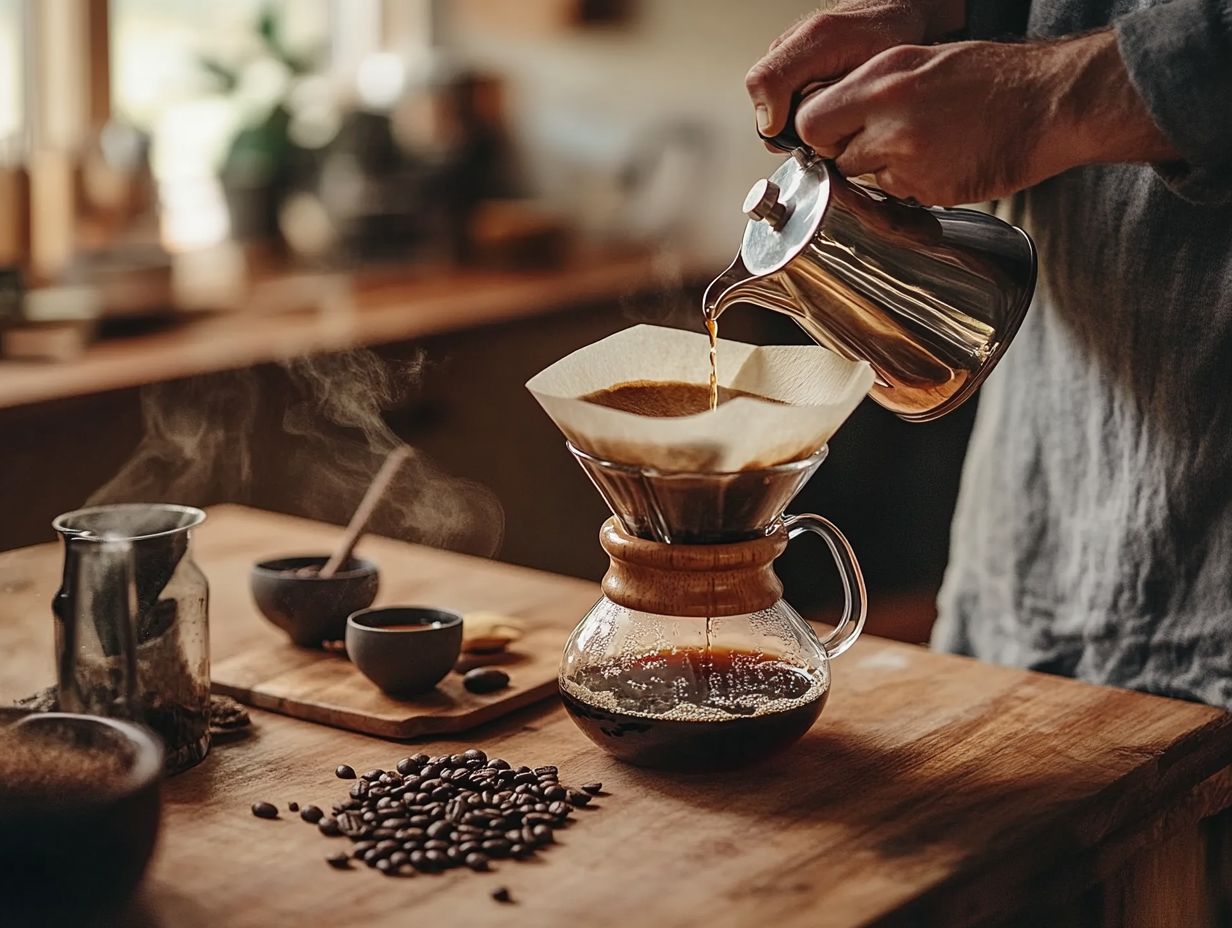
Weak or watery coffee often stems from under-extraction or inadequate brewing techniques. It s essential to make the right adjustments for a fuller, more robust flavor.
When you don t extract the beans properly, many of those important oils and nutrients that contribute to that rich taste get left behind, resulting in a diluted brew.
Several factors play a pivotal role in the extraction process, including grind size, water temperature, and brew time. For instance, if you use coarsely ground coffee in a drip maker, you might find that it doesn t release enough flavor. On the other hand, overly fine grounds can clog your filters, leading to a bitter taste that no one wants.
By utilizing high-quality beans and optimizing your brewing method, you can significantly elevate your final cup. Experimenting with fresh, whole beans and investing in precise brewing equipment will help you achieve that perfect balance, transforming your coffee experience into something truly satisfying and delightful.
3. Uneven Extraction
Uneven extraction during brewing can lead to inconsistent flavors and aromas in your coffee. This underscores the importance of mastering brewing techniques and understanding yeast behavior.
Several crucial factors contribute to this unevenness, including grind size, the equipment you choose, and the brewing methods you employ. A grind that is too coarse may result in under-extraction, leaving you with a lackluster cup, while a finer grind could lead to bitter over-extraction.
The choice of brewing equipment whether it s a French press or a pour-over significantly influences how water interacts with your coffee grounds. Techniques such as controlling water temperature and timing also come into play, as they affect the solubility of coffee compounds.
To achieve a more uniform extraction, consider experimenting with adjusting your grind size, optimizing brew time, and ensuring consistent water temperature across different brews. This way, you can elevate your coffee-making game and savor every sip.
4. Equipment Malfunctions
Equipment malfunctions can throw a wrench in your brewing process, leading to inconsistencies that ultimately affect the quality of your beer. This is particularly true in small-batch brewing where precision is key.
These disruptions might show up as off-flavors, diminished aroma, or variations in alcohol content, all of which can be traced back to faulty equipment. For example, if your thermometer is on the fritz, it could mislead you during those critical temperature-sensitive stages.
Anyone who brews should know these potential pitfalls and perform regular maintenance checks on all equipment. Cleaning and replacing worn parts should be part of your routine. Simple troubleshooting steps, such as recalibrating your instruments or ensuring proper seals, can make a significant difference in safeguarding the purity of your fermentation process.
Advanced Techniques for Mastering Brewing
Mastering advanced brewing techniques often involves leveraging knowledge from resources like Escarpment Labs and understanding the impact of various ingredients on the brewing process.
Mastering advanced brewing techniques requires you to develop a profound understanding of biotransformation, which is the process where yeast changes ingredients during fermentation, and yeast performance. You’ll need to hone your skills in manipulating various factors to elevate the brewing process to new heights.
Ready to elevate your coffee experience? Try these tips today!
1. Cupping: Evaluating the Quality of Coffee
Cupping is an essential method for you to evaluate the quality of coffee. It allows you to assess flavor profiles and identify distinct characteristics that can enhance your brewing techniques. This method is similar to how flavor is assessed in coffee. Evaluating factors like aroma and taste is key.
This systematic process involves brewing ground coffee with hot water. You let it steep before gently breaking the crust that forms on top to release those delightful aromatic compounds. The experience you gain through cupping will help you refine your brewing methods, ensuring your final cup reflects the coffee’s unique origin, processing method, and varietal traits.
By carefully tasting different coffees side by side, you can deepen your understanding of how various factors like grind size, water temperature, and brewing time affect the overall flavor and aroma. This knowledge ultimately contributes to your superior coffee craftsmanship.
2. Latte Art: Adding a Creative Touch to Your Brew
Latte art is more than just a pretty design; it s your opportunity to enhance the visual appeal of coffee while showcasing your skills and meticulous attention to detail in brewing techniques.
For you, as a coffee aficionado, a beautifully crafted design atop your latte doesn t just elevate the aesthetic experience; it s a testament to the barista s mastery of the steaming process and milk texture. Techniques like free pouring and etching require both precision and practice. You can transform a simple coffee drink into a canvas for your personal expression.
This artistry is pivotal in engaging customers, as many patrons are increasingly drawn to visually stunning beverages that reflect the quality and passion behind each cup. When intricate latte art graces your drink, it can elevate your overall coffee experience, turning an ordinary visit into a memorable occasion and fostering a deeper appreciation for the craft of brewing.
3. Roasting Coffee Beans
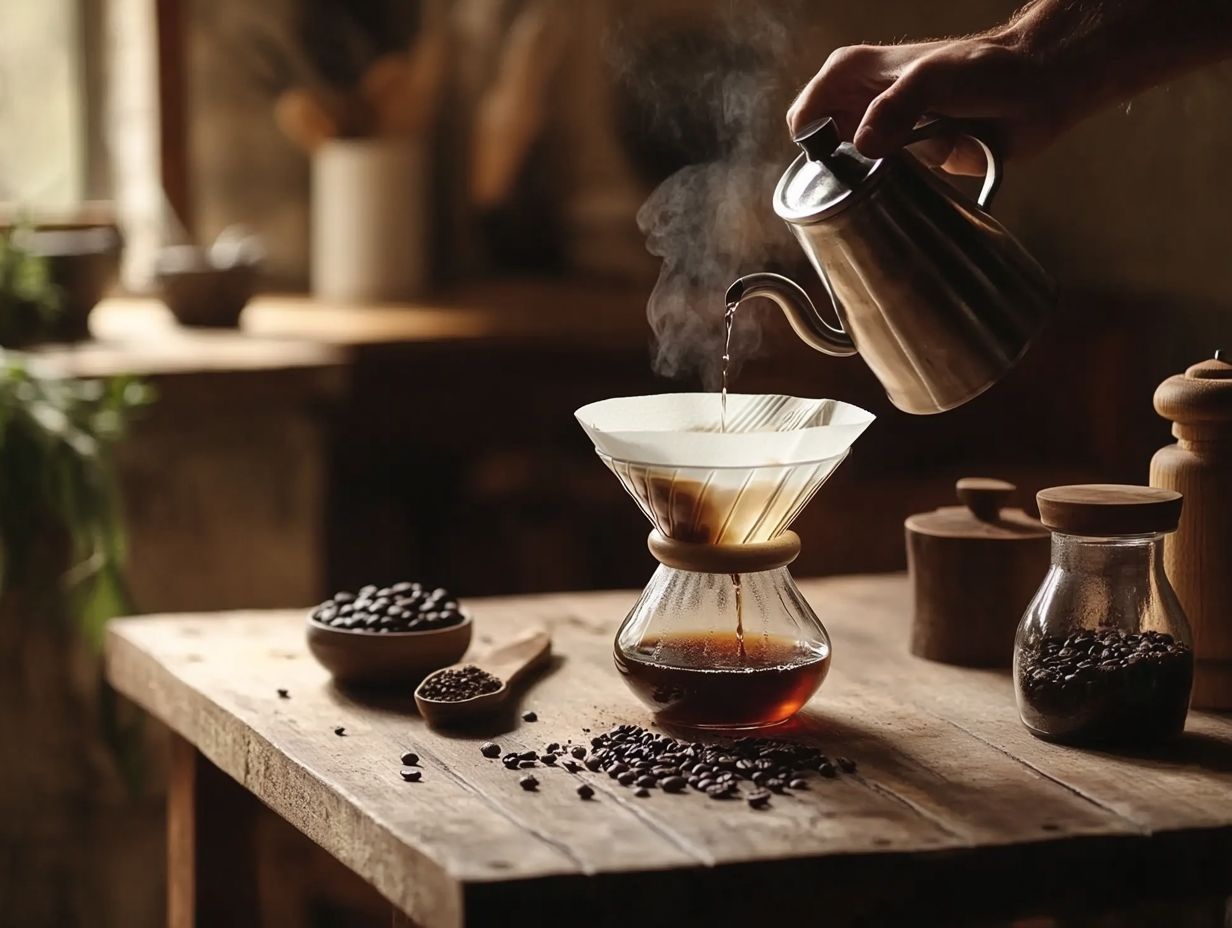
Roasting your own beans gives you the freedom to customize flavors and aromas, allowing you to take control of the final quality of your brew while enhancing your brewing techniques.
By experimenting with various roasting levels, you can discover a remarkable array of taste characteristics. These range from the vibrant acidity of lightly roasted beans to the deep, bold undertones found in dark roasts. Each roast profile reveals unique flavor notes that can significantly impact your overall coffee experience.
Tailoring the roast to complement specific brewing methods, like espresso or pour-over, can accentuate particular attributes, elevating your enjoyment of the drink.
This exciting approach to roasting guarantees you’ll enjoy every sip, transforming your coffee journey into an engaging exploration, whether you’re a novice or a seasoned coffee connoisseur.
4. Participating in Brewing Competitions
Participating in brewing competitions can truly elevate your brewing skills. These competitions offer valuable feedback on the quality of your coffee while deepening your understanding of fermentation processes. This also helps in mastering craft brewing techniques and gaining recognition among peers.
These events present a remarkable opportunity for networking with fellow brewing aficionados and industry professionals. By engaging with other brewers, you can exchange best practices, uncover innovative techniques, and gain insights into the latest trends within the craft coffee community.
Receiving critiques from seasoned judges can be pivotal in refining your craft. They shine a light on both your strengths and areas where you can improve. Joining these competitions fuels your personal growth and fosters a sense of camaraderie among passionate brewers committed to pushing the boundaries of their artistry.
Frequently Asked Questions
How Can I Improve My Brewing Skills?
There are several ways you can improve your brewing skills:
- Practice, practice, practice! The more you brew, the better you will become at the process.
- Dive into the world of brewing classes with seasoned experts!
- Join a homebrewing club to receive feedback on your brews and learn from others.
- Read books or online resources on brewing techniques and best practices.
- Attend beer tastings to expand your palate and understanding of different flavors and styles.
- Experiment with different ingredients and techniques. Testing different strains of yeast, hops, barley, and malt can help you discover what works best for you.
What are some common mistakes to avoid when trying to improve my brewing skills and knowledge base?
Avoid these common mistakes to enhance your brewing skills:
- Not properly sanitizing equipment can lead to contamination and off-flavors in your beer. Good sanitation keeps your beer safe and healthy.
- Not following the recipe closely enough can result in a beer that doesn’t turn out as intended. This includes monitoring fermentation temperature and understanding yeast behavior.
- Not giving your beer enough time to ferment and condition properly can lead to off-flavors and a lack of carbonation. Proper fermentation processes are key to beer quality.
- Using poor quality ingredients can greatly affect the taste and quality of your beer.
- Not taking notes and keeping track of your brewing process makes it difficult to replicate or improve upon successful batches.
- Not seeking feedback and constructive criticism from others in the brewing community can limit your growth as a brewer.
How can I become more knowledgeable about different brewing styles, brewing techniques, and fermentation processes?
To become more knowledgeable about different brewing styles and techniques, you can:
- Attend brewing events and festivals to taste and learn about a wide variety of beers.
- Read books and articles about different beer styles, their origins, and brewing techniques.
- Join online forums or social media groups dedicated to brewing to ask questions and learn from others.
- Visit local breweries and talk to the brewers about their processes and techniques.
- Take a class or workshop focused on a certain brewing style or technique, such as those offered by Escarpment Labs.
- Experiment by brewing different styles and techniques yourself.
What is the most important aspect of brewing to focus on when trying to improve my skills?
The most important aspect of brewing is proper sanitation and cleanliness. Thoroughly clean and sanitize all equipment and surfaces used in the brewing process, and practice good hygiene. Contamination can greatly affect the taste and quality of your beer, so prioritizing sanitation is crucial. Understanding yeast behavior and fermentation temperature is also essential for maintaining beer quality.
How can I improve my beer tasting abilities and better understand flavor profiles?
To improve your beer tasting abilities, you can:
- Attend beer tastings and try a wide variety of styles and flavors to expand your palate.
- Research different flavor profiles and characteristics of beers.
- Practice identifying specific flavors and aromas by blind tasting and comparing notes with others.
- Take notes and keep track of your tasting experiences to improve your ability to identify and describe flavors.
- Learn from others and seek feedback on your tasting abilities.
- Experiment with pairing different foods with beers to enhance your tasting experience.
Is it Necessary to Invest in Expensive Equipment to Improve My Brewing Skills?
No, it’s not essential to spend a lot on equipment to enhance your brewing skills. You can create fantastic beer even with the simplest tools!
High-quality equipment can make brewing easier and more efficient. However, with proper sanitation (keeping everything clean to avoid contamination), yeast management, and technique, you can produce excellent beer using basic equipment.
As your skills grow, you may choose to invest in more advanced brewing equipment if desired.

